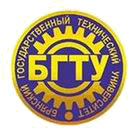Брянский клинико-диагностический центр (кабинет статистики, заведующая)
Брянск, Брянская область, Россия
Брянск, Брянская область, Россия
ГРНТИ 50.07 Теоретические основы вычислительной техники
ББК 3297 Вычислительная техника
The paper discusses methodology of cleaning and analysis of small semi-structured samples of biomedical data. This methodology is aimed at statistical evaluation of harmful production factor correlation with workers’ laboratory test data. As a result of the analysis and interpretation of the data, a deviation from the norm is observed according to some indicators of a clinical blood test in individuals whose occupational activity is associated with harmful factors. Conclusions are drawn about the need for further research in the group of people whose work is related to harmful production factors. It is necessary to employ intelligent methods for analyzing possible health risks and their negative consequences in order to make management decisions. The presented assessment methodology can be used to create an occupational health and safety information system.
risk assessment, data analysis, harmful working conditions, statistical methods, data cleaning, model ensembles, Kohonen self-organizing maps
1. World Federation of Societies of Anaesthesiologists. 466 p.
2. Kohonen T. The Self-Organizing Map // Proceeding ofthe IEEE. 1990. Vol. 78. P. 1464-1480.
3. Manyika J., Chui M., Brown B. et al. (2011) Big Data:The Next Frontier for Innovation, Competition, and Productivity/ McKinsey Global Institute.
4. Baranov A.A., Namazova-Baranova L.S., SmirnovaI.V. et al. Methods and Tools for Complex Intelligent Analysisof Medical Data. Trudy ISA RAN. Vol. 65. 2.2015. pp. 81-93.
5. Barriers and Prospects for Digital Transformation: BigData Management Issues in the Healthcare Industry [Online]. -Available: http://www.medlinks.ru/article.php?sid=83028(Accessed: July 23, 2019).
6. Geger E.V., Fedorenko S.I. Information Support ofDecision-Making when Assessing the Risk for OccupationalMorbidity Based on Analysis of Binary Samples // Proceedingsof Southwest State University. Control, Computer Engineering,Information Science. Medical Instruments Engineering, no. 2(27). 2018. pp. 101-107.
7. Healthcare will Show the Largest Increase in DataGeneration by 2025 [Online]. - Available:http://apcmed.ru/news/news-all/zdravookhranenie-pokazhetnaibolshiy-rost-v-generatsii-dannykh-k-2025-godu/ (Accessed:July 23, 2019).
8. Izmerov N.F., Actualization of OccupationalMorbidity Issues // Health Care of the Russian Federation(Zdravookhraneniye Rossiyskoy Federatsii.), no. 2. 2013. pp. 14-17.
9. Ismailova L.N. Effective Management of ProductionRisks. // Economy and Business: Theory and Practice. 2016. No.5. pp. 77-79.
10. Kostenko N.A. Working Conditions and OccupationalMorbidity as a Basis for Risk Management of Workers' Health:abstract of cand. med. sci. diss. M., 2015. 21 p.
11. International Classification of Diseases of the tenthrevision (ICD-10) [Online]. - Available: https://mkb-10.com(Accessed: July 20, 2019).
12. The Order of the Ministry of Health and SocialDevelopment of the Russian Federation No. 417n dated27/04/2012 “On the Approval of the List of OccupationalDiseases”. [Online]. - Available:http://base.garant.ru/70177874/ (дата обращения 23.05.2019).
13. The Order of the Ministry of Health of the RussianFederation dated 12/04/2011 No. 302n (as amended on06/02/2018) “On the Approval of Lists of Harmful and (or)Hazardous Occupational Factors and Kinds of Work that RequireMandatory Preliminary and Periodical Medical Examinations(Surveys), and the Procedure for Conducting MandatoryPreliminary and Periodical Medical Examinations (Surveys)”. [Online]. - Available: http://base.garant.ru/12191202/(Accessed: May 21, 2019).
14. The Federal Law dated 27/07/2006 No. 152-FZ (asamended on 29/07/2017) ""On Personal Data"". [Online]. -Available: http://base.garant.ru/5635295/ (Accessed: May 21,2019).
15. Tsvetkova L.A., Cherchenko O.V. Big DataTechnology in Medicine and Healthcare in Russia and the World// Information technologies for the Physician, 2016. No. 3. pp.60-73.
16. Tsygankova, I.A. Method of Intelligent Processing ofBiomedical Data [Text] / I.A. Tsygankova // Software Productsand Systems. - 2009. -no. 3. - pp. 120-123.
17. Choporov O.N., Razinkin K.A. Optimization Model ofChoice of the Initial Plan of Control Actions for MedicalInformation Systems / Control Systems and InformationTechnology. 2011. Vol. 46. No. 4.1. P. 185-187.
18. BaseGroup. Data Analysis Technologies [Online] //Available: https://basegroup.ru/ (Accessed: May 20, 2019).
19. Loginom [Online] // Available: https://loginom.ru/(Accessed: May 20, 2019).





